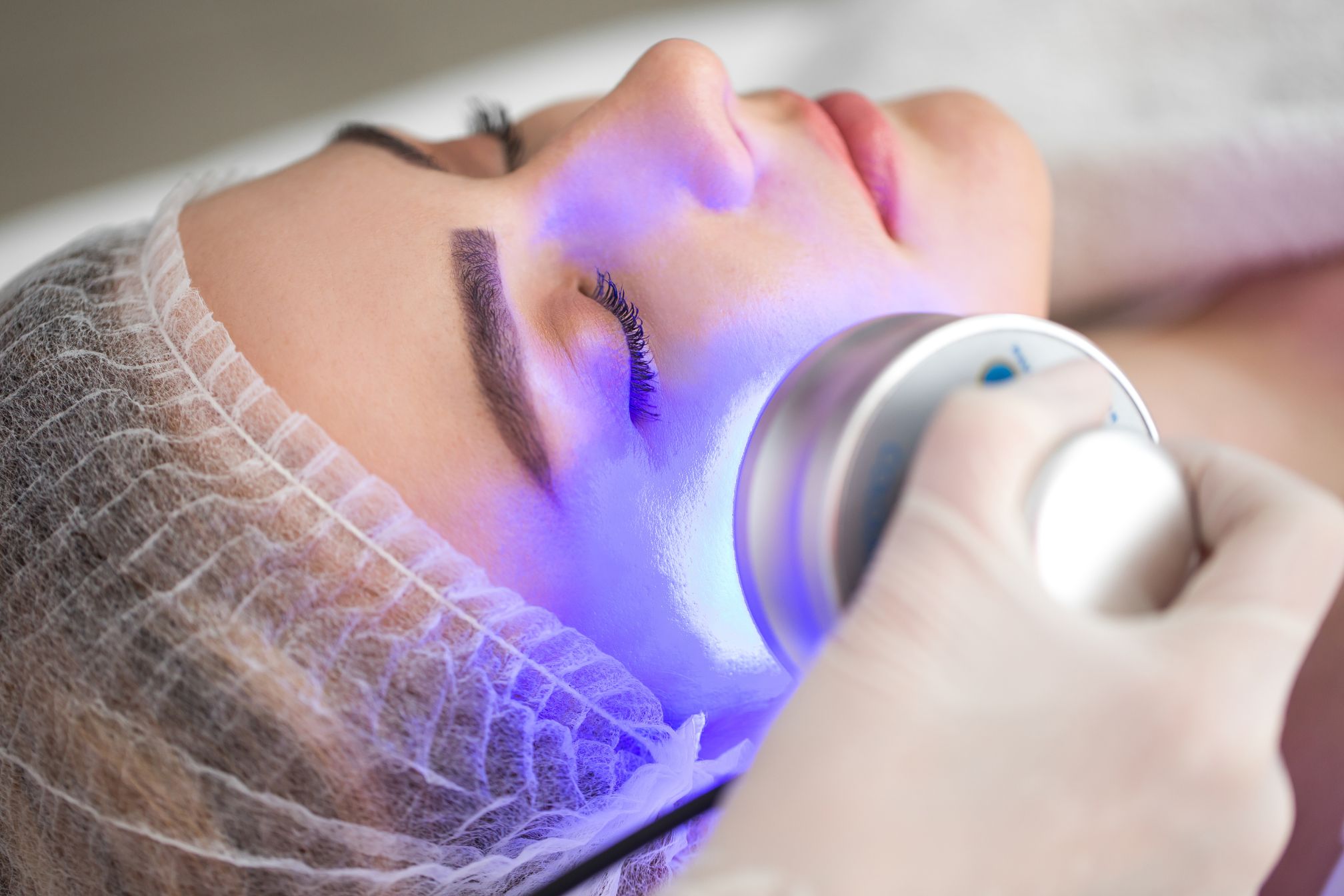When it comes to comparing the safety of initial and repeat TRUS prostate biopsies, understanding the nuances is essential. Let’s dive into the details, exploring how these procedures stack up against each other, with a clear focus on safety.
What Is a TRUS Prostate Biopsy?
You might have heard of a TRUS prostate biopsy before, but let’s break it down. TRUS stands for Transrectal Ultrasound, a method where a small ultrasound probe is inserted into the rectum to visualize the prostate gland. It’s not just about looking, though. This procedure involves taking small tissue samples from the prostate, which are then examined for signs of cancer.
Now, here’s where it gets interesting: when we talk about comparing the safety of initial and repeat TRUS prostate biopsies, we’re looking at how the body responds the first time versus subsequent times. It’s like the difference between dipping your toes in the water and diving in headfirst—each experience can be quite different.
The Initial TRUS Prostate Biopsy: What to Expect
Your first encounter with a TRUS prostate biopsy can be a bit nerve-wracking, no doubt about it. But knowing what to expect can ease some of those nerves.
During your first TRUS biopsy, the procedure is typically straightforward. You’ll be lying on your side, and after some local anesthesia, the doctor will use the ultrasound probe to guide a needle into your prostate. Sounds intense, right? But rest assured, the discomfort is usually minimal, and the entire process is over in minutes.
Safety of Initial TRUS Prostate Biopsy
When it comes to safety, the initial TRUS prostate biopsy is generally low-risk. Complications like infections or significant bleeding are rare. However, like any medical procedure, it’s not without its risks. The most common issues include:
- Mild bleeding: You might see a bit of blood in your urine or stool for a few days after the procedure.
- Discomfort: Some men experience a bit of pain, but it’s usually manageable with over-the-counter pain relief.
- Infection: Although rare, infections can occur. To prevent this, your doctor will likely prescribe antibiotics.
Repeat TRUS Prostate Biopsies: What Changes?
So, what happens when you need a repeat TRUS prostate biopsy? Maybe your doctor didn’t find enough information in the first round, or perhaps there’s a need to monitor an ongoing condition. Here’s where the plot thickens.
A repeat biopsy isn’t just a rerun of the first one. Your body might react differently this time around. The tissue has been sampled before, and the repeat procedure can sometimes feel a bit more intense. But don’t worry—it’s still a safe and routine procedure.
Safety of Repeat TRUS Prostate Biopsy
When comparing the safety of initial and repeat TRUS prostate biopsies, the risks slightly increase with repetition. Here’s why:
- Increased risk of infection: The more times you have a biopsy, the more likely it is that bacteria could enter the bloodstream, leading to infections.
- Cumulative tissue damage: Repeated biopsies can cause scar tissue to form in the prostate, which might lead to chronic pain or discomfort.
- Longer recovery: You might notice that it takes a little longer to bounce back after each subsequent biopsy.
Real-Life Experiences: The Human Side of TRUS Biopsies
Let’s pause here and talk about real people who’ve gone through these procedures. John, a 62-year-old man from Texas, had his first TRUS biopsy after his PSA levels spiked. “The first time wasn’t too bad,” John recalls. “A bit uncomfortable, sure, but nothing I couldn’t handle.”
But when John needed a second biopsy a year later, things felt different. “The second time around, I noticed more bleeding and it just took me longer to feel back to normal,” he says. John’s experience isn’t uncommon—repeat procedures can have a slightly rougher edge.
The Importance of Antibiotic Prophylaxis
One key aspect when comparing the safety of initial and repeat TRUS prostate biopsies is the role of antibiotics. To minimize the risk of infection, doctors typically prescribe antibiotics before the procedure. However, with repeated biopsies, the risk of antibiotic resistance becomes a concern.
Imagine this: each time you take antibiotics, the bacteria in your body get a little smarter. After multiple biopsies, those pesky bacteria might start resisting the usual meds, leading to a higher risk of infection. This is why it’s crucial for your doctor to carefully select and sometimes even rotate antibiotics for repeat procedures.
The Psychological Impact: More Than Just Physical
While we’ve focused a lot on the physical side of things, there’s also a psychological component when comparing the safety of initial and repeat TRUS prostate biopsies. The anticipation, the procedure itself, and the recovery can all take a toll on mental well-being, especially when faced with the prospect of multiple biopsies.
Take David, for instance. After his first biopsy, he felt relieved but anxious about the results. “The waiting was the hardest part,” David says. But when his doctor suggested a repeat biopsy six months later, David’s anxiety levels spiked. “It was like a dark cloud hanging over me,” he admits.
Long-Term Outcomes: What You Should Know
Now, let’s talk about the long-term implications. While most men recover quickly from both initial and repeat TRUS prostate biopsies, there are some considerations for the future.
For some, the tissue changes from multiple biopsies can lead to chronic issues, like persistent discomfort or even complications with urination. However, these are exceptions rather than the rule. Most men go on to live healthy, normal lives post-biopsy.
Managing Expectations: What You Can Do
When it comes to comparing the safety of initial and repeat TRUS prostate biopsies, knowledge is power. Understanding the potential risks and preparing for them can make all the difference. Here’s what you can do:
- Communicate with your doctor: Make sure you’re on the same page about what to expect, especially if you’re going in for a repeat biopsy.
- Follow post-procedure instructions: This might include taking prescribed antibiotics, resting, and avoiding strenuous activities for a few days.
- Monitor your symptoms: If you notice anything unusual, like prolonged bleeding or severe pain, don’t hesitate to reach out to your healthcare provider.
FAQ
What is a TRUS prostate biopsy?
A TRUS (Transrectal Ultrasound) prostate biopsy is a procedure where an ultrasound probe is inserted into the rectum to guide a needle for collecting tissue samples from the prostate. This is done to detect or monitor prostate cancer.
How safe is an initial TRUS prostate biopsy?
The initial TRUS prostate biopsy is generally considered safe, with low risks of complications. Common side effects include mild bleeding and discomfort. Infections are rare but can be prevented with antibiotic prophylaxis, making it a routine and well-tolerated procedure.
What are the risks of repeat TRUS prostate biopsies?
Repeat TRUS prostate biopsies carry a slightly higher risk than initial biopsies. Increased risks include infections, due to potential antibiotic resistance, and tissue damage, which can lead to chronic discomfort or scarring. However, these procedures are still generally safe with proper precautions.
What is the safest type of prostate biopsy?
The safety of a prostate biopsy largely depends on the method and patient-specific factors. Transperineal biopsies are often considered safer than transrectal ones due to a lower risk of infection. However, each case should be evaluated individually by a healthcare provider.
How often should you repeat a prostate biopsy?
Repeat prostate biopsies are generally done when there’s ongoing suspicion of cancer or to monitor a known condition. The frequency depends on individual circumstances, including initial biopsy results and changes in PSA levels. Typically, they are spaced out by several months to years.
What is the gold standard for prostate biopsy?
The gold standard for prostate biopsy is the transrectal ultrasound (TRUS)-guided biopsy. This method is widely used due to its effectiveness in detecting prostate cancer and its ability to provide precise guidance for needle placement.
How safe is transrectal prostate biopsy?
Transrectal prostate biopsy is generally safe, though it does carry some risks, such as infection and bleeding. Proper antibiotic prophylaxis and adherence to post-procedure care can significantly reduce these risks, making it a routine and effective procedure for prostate cancer detection.
What is the best method for prostate biopsy?
The best method for prostate biopsy depends on the patient’s specific situation. Transrectal ultrasound (TRUS)-guided biopsy is commonly used, but transperineal biopsy is gaining popularity due to its lower infection risk. Your doctor will recommend the method best suited for your condition.
Which is better, transrectal or transperineal prostate biopsy?
Transperineal biopsy is often preferred over transrectal biopsy due to a lower risk of infection. Transperineal biopsies are performed through the skin between the scrotum and anus, avoiding the rectal area, which reduces the likelihood of infections.
Is a prostate biopsy 100% accurate?
No, a prostate biopsy is not 100% accurate. While it is a highly effective diagnostic tool, there is a risk of false negatives or missed cancerous areas. Additional tests and follow-up evaluations may be necessary to confirm diagnosis.
Does PSA rise after prostate biopsy?
Yes, PSA (prostate-specific antigen) levels may temporarily rise after a prostate biopsy due to the procedure itself causing minor trauma to the prostate. This increase is usually short-lived and should return to baseline within a few weeks.
At what age is prostate biopsy not recommended?
Prostate biopsies are typically not recommended for very elderly patients, especially if they have a limited life expectancy or other significant health issues. The decision is individualized, considering the patient’s overall health and potential benefits of the biopsy.
What is the newest method of prostate biopsy?
The newest method of prostate biopsy is the fusion biopsy, which combines MRI and ultrasound imaging to improve accuracy. This technique allows for more precise targeting of suspicious areas, enhancing the likelihood of detecting cancer and reducing the risk of missing it.
Why avoid prostate biopsy?
Prostate biopsy may be avoided if the risks outweigh the benefits, such as in patients with severe health issues or those where the procedure is unlikely to change management. In some cases, alternative diagnostic methods or active surveillance may be recommended instead.
What is better than a prostate biopsy?
For some patients, advanced imaging techniques like multiparametric MRI may be considered better alternatives or supplements to prostate biopsy. These methods provide detailed images and can help guide biopsy decisions, potentially reducing the need for multiple biopsies.
Conclusion
At the end of the day, comparing the safety of initial and repeat TRUS prostate biopsies comes down to balancing the risks and benefits. The first biopsy is generally safe, with minimal complications. However, as with any medical procedure, the more you do it, the higher the chances of encountering some issues.
That said, the benefits of a TRUS prostate biopsy—catching cancer early, monitoring suspicious changes, and getting peace of mind—often far outweigh the risks. By staying informed and working closely with your doctor, you can navigate the process with confidence and care.
So, if you’re facing the prospect of a TRUS prostate biopsy, whether it’s your first time or a repeat, remember that you’re not alone. With the right preparation and support, you can get through it with your health and well-being intact










